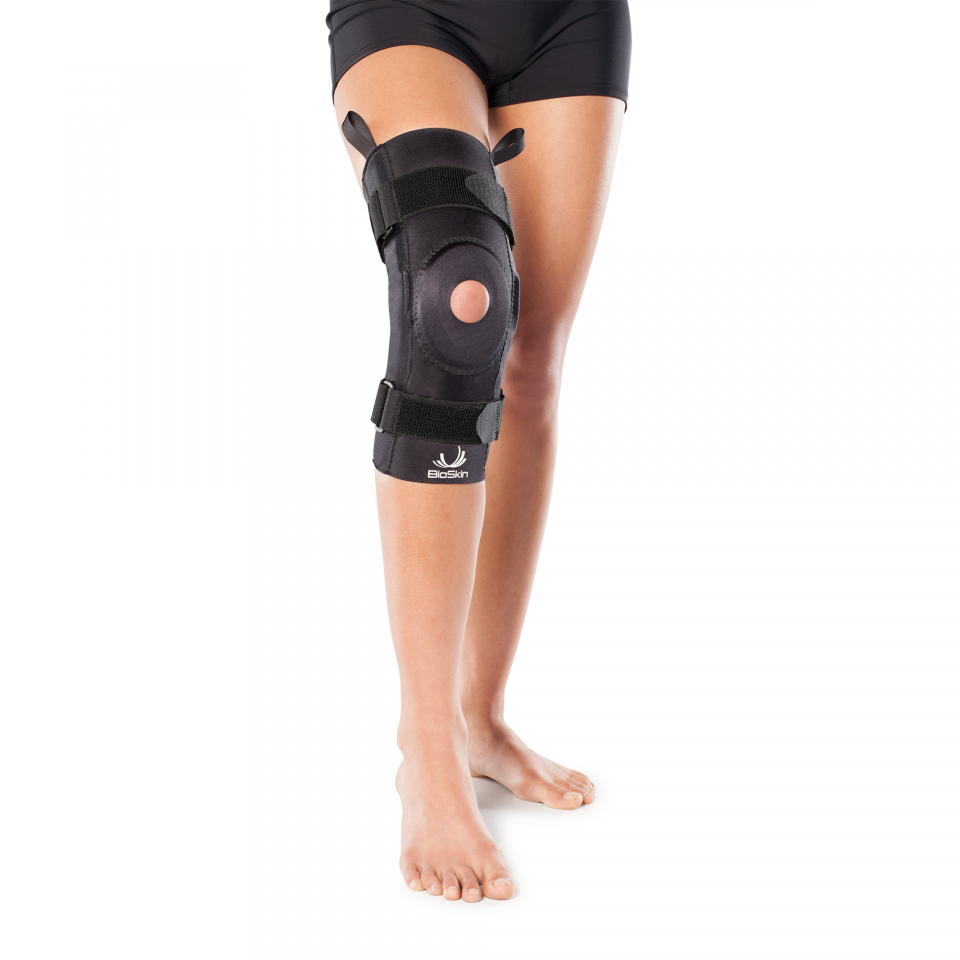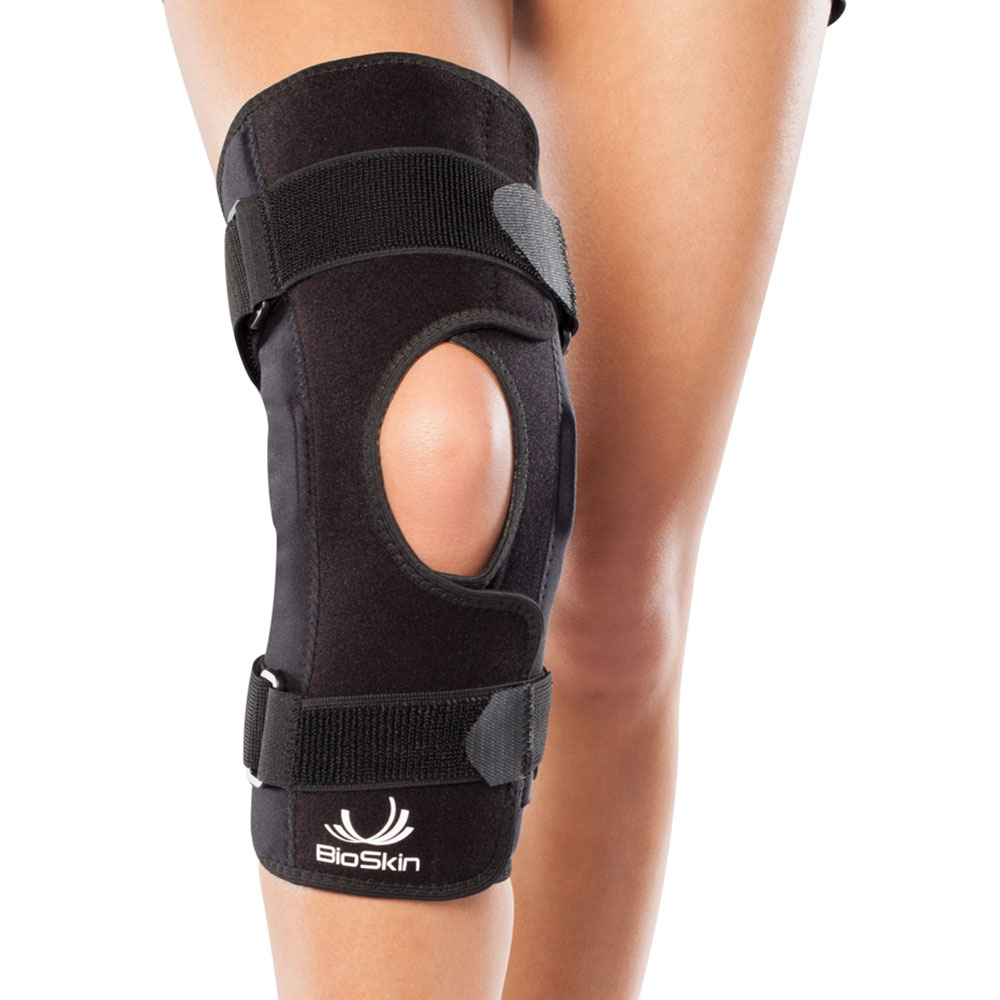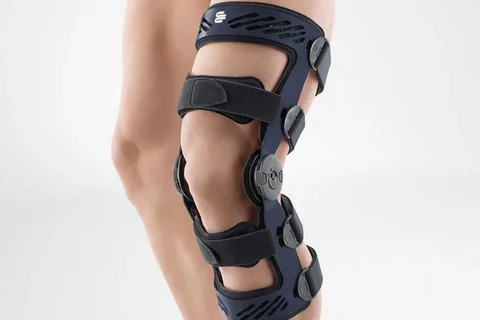Table of Contents
ToggleKnee Brace An In-Depth Guide

Introduction
Knee braces are essential tools for individuals recovering from knee injuries, dealing with chronic knee pain, or looking to prevent injuries during physical activities. This comprehensive guide will cover everything you need to know about knee braces, including their types, benefits, how to choose the right one, and tips on using them effectively.
Whether you’re an athlete, a senior, or someone with an active lifestyle, understanding the role of knee braces can make a significant difference in your mobility and overall joint health. This guide is designed to help you make informed decisions about using knee braces, ensuring that you can enjoy the activities you love without unnecessary pain or risk of injury.
Types of Knee Braces
- Prophylactic Braces
- Designed to prevent knee injuries, especially in contact sports like football or hockey,. These braces are typically worn by athletes to protect the knee ligaments from damage during high-impact activities.
- Functional Braces
- Used post-injury, functional braces help stabilise the knee and support the recovery process. They are often recommended for individuals who have experienced ligament tears or other serious knee injuries.
- Rehabilitative Braces
- After surgery or a severe injury, rehabilitative braces limit knee movement to protect the healing process. They allow controlled movement and can be adjusted to gradually increase the range of motion as recovery progresses.
- Unloader/Offloader Braces
- Commonly used by individuals with arthritis, these braces are designed to relieve pressure on the knee joint. They help distribute weight away from the damaged area, reducing pain and improving mobility.
- Compression Sleeves
- While not technically braces, compression sleeves provide mild support and help reduce swelling. They are popular among runners and individuals with mild knee pain or inflammation.
Benefits of Knee Braces
- Injury Prevention
- Wearing a knee brace during activities can significantly reduce the risk of injury. This is particularly important for athletes engaged in sports that put a lot of stress on the knees.
- Pain Relief
- Knee braces can provide immediate relief from pain caused by injuries, arthritis, or overuse. By stabilising the knee, they help reduce strain on the affected area.
- Enhanced Recovery
- For those recovering from surgery or injury, knee braces support the healing process by limiting movement and providing stability. This can prevent further damage and promote faster recovery.
- Improved Confidence
- Many people find that wearing a knee brace gives them the confidence to return to their favourite activities. Knowing that your knee is supported can alleviate fears of re-injury.
How to Choose the Right Knee Brace

- Identify Your Needs
- Determine the purpose of the knee brace. Are you looking for injury prevention, post-injury support, or pain relief from a chronic condition? Understanding your specific needs will help you choose the right type of brace.
- Consult a Healthcare Professional
- It’s always a good idea to consult with a doctor or physical therapist before choosing a knee brace. They can recommend the best type of brace based on your injury, condition, and activity level.
- Consider the Fit
- A knee brace should fit snugly but not too tight. Measure your knee circumference according to the manufacturer’s instructions to ensure a proper fit. An ill-fitting brace can cause discomfort or even exacerbate your condition.
- Material and Comfort
- Look for a knee brace made from breathable, moisture-wicking material. This will help keep your knee cool and dry, even during intense activities. Comfort is key to wearing the brace consistently.
- Durability
- Choose a brace that is durable enough to withstand your level of activity. For athletes, a high-quality brace that can endure frequent use is essential.
When to Wear a Knee Brace
- During Physical Activity
- Wearing a knee brace during sports, exercise, or any physically demanding activities can help prevent injuries and provide support to an already weakened knee.
- Post-Injury or Surgery
- After an injury or surgery, wearing a knee brace as directed by your healthcare provider can help protect the knee during recovery and prevent further damage.
- For Chronic Conditions
- Individuals with chronic knee pain or conditions like arthritis may benefit from wearing a knee brace daily or during specific activities that tend to exacerbate their symptoms.
- As Needed for Pain Relief
- If you experience occasional knee pain, wearing a brace during flare-ups can provide temporary relief and support.
Tips for Using a Knee Brace Effectively
- Follow Medical Advice
- Always follow the advice of your healthcare provider regarding when and how to wear your knee brace. Overuse or improper use can lead to muscle weakness or dependency.
- Keep It Clean
- Regularly clean your knee brace according to the manufacturer’s instructions to prevent odor and maintain its effectiveness. Some braces are machine washable, while others may require hand washing.
- Check the Fit
- Periodically check the fit of your knee brace. Changes in your body size or shape can affect how well the brace fits, so adjust it as needed to ensure optimal support.
- Replace When Necessary
- Knee braces can wear out over time, losing their effectiveness. Inspect your brace regularly for signs of wear and tear, and replace it when necessary.
- Listen to Your Body
- If you experience increased pain, swelling, or discomfort while wearing a knee brace, stop using it and consult your healthcare provider. Your body may be signaling that something is wrong.
Popular Brands of Knee Braces

- DonJoy
- Known for its high-quality functional and rehabilitative braces, DonJoy is a trusted brand among athletes and medical professionals.
- McDavid
- McDavid offers a wide range of knee braces, from basic compression sleeves to advanced support braces. They are popular for their durability and comfort.
- Mueller
- Mueller provides affordable, reliable knee braces for both everyday use and athletic support. They are known for their lightweight and breathable designs.
- Shock Doctor
- Shock Doctor specialises in braces for athletes, offering advanced protection and support for high-impact sports.
- Bauerfeind
- A German brand known for its medical-grade knee braces, is a top choice for individuals with chronic knee conditions or those recovering from surgery.
Also read: Compression Socks: A Comprehensive Guide
Conclusion
Knee braces are valuable tools for injury prevention, pain relief, and recovery support. Whether you’re an athlete, someone dealing with chronic knee pain, or recovering from surgery, finding the right knee brace can make a significant difference in your quality of life. By understanding the different types of braces available and how to choose the best one for your needs, you can ensure that your knees stay protected and supported, allowing you to maintain an active and healthy lifestyle.